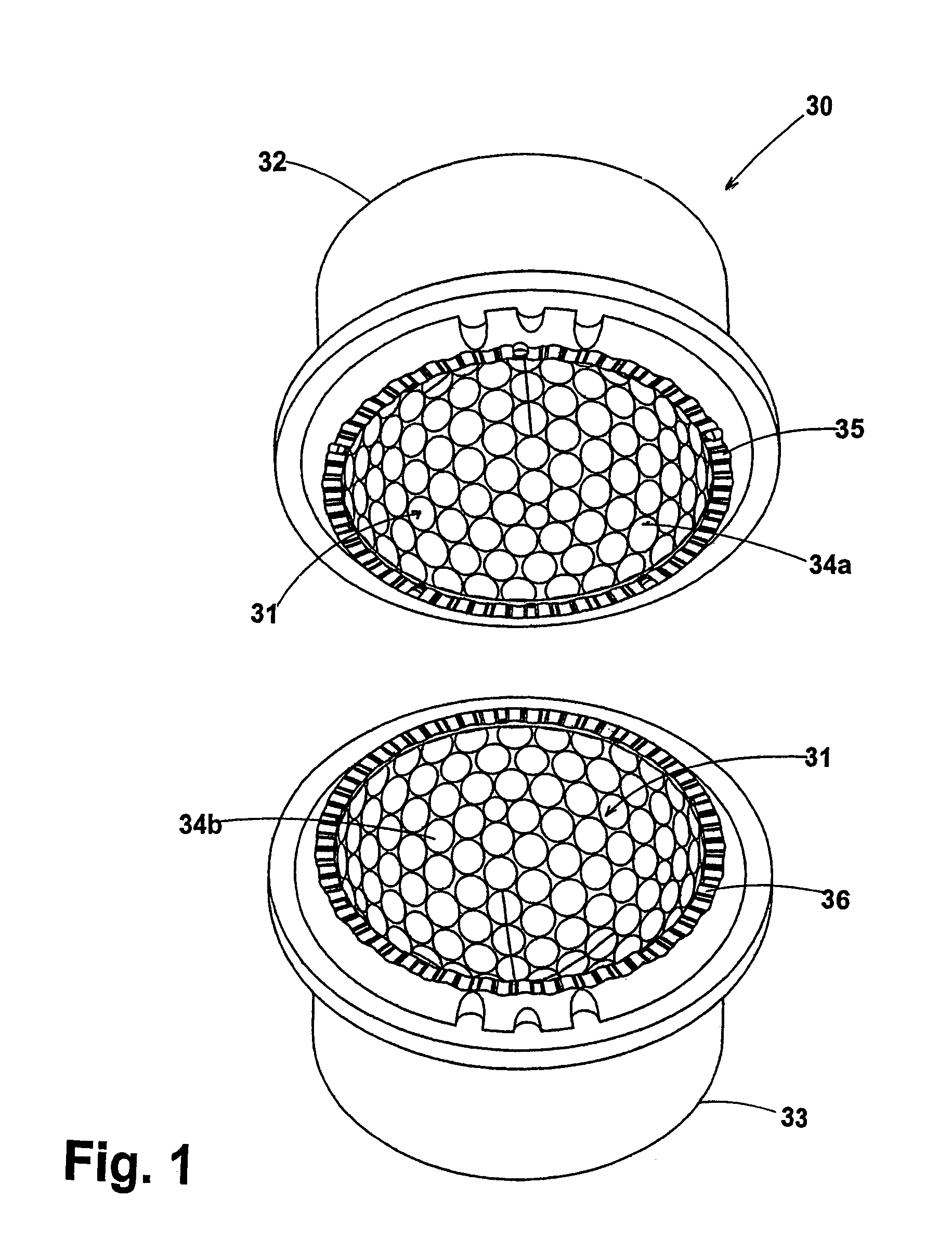Golf ball
a golf ball and mold technology, applied in the field of molds for golf balls, can solve the problems of golf ball cover dimple pattern formation, mold flash, and other projecting surface imperfections, and achieve the effect of minimizing mold flash
- Summary
- Abstract
- Description
- Claims
- Application Information
AI Technical Summary
Benefits of technology
Problems solved by technology
Method used
Image
Examples
Embodiment Construction
[0024]Referring to FIGS. 1 to 2b, wherein an improved mold of the present invention is shown, with the mold being indicated by the reference numeral 30, the mold 30 having a spherical cavity 31 which is used to form a cover for a golf ball wherein the mold 30 comprises generally hemispherical mold halves, an upper mold half 32 and a lower mold half 33, both halves having interior dimple cavity details 34a and 34b respectively with the details of the upper mold half 34a shown in FIGS. 2, 2A and 2B, for a mold designed to form a castable cover over a core, and when these halves are mated they define a dimple arrangement therein. Any dimple arrangement, such as icosahedral, octahedral, cube-octahedral, dipyramid, and the like could have the dimple pattern, although the preferred dimple pattern for the preferred embodiment of the invention is the icosahedron pattern. Although the preferred dimple is circular when viewed normal to the spherical cavity surface, the dimples may be oval, tr...
PUM
| Property | Measurement | Unit |
|---|---|---|
| length | aaaaa | aaaaa |
| wavelength | aaaaa | aaaaa |
| length | aaaaa | aaaaa |
Abstract
Description
Claims
Application Information
 Login to View More
Login to View More - R&D
- Intellectual Property
- Life Sciences
- Materials
- Tech Scout
- Unparalleled Data Quality
- Higher Quality Content
- 60% Fewer Hallucinations
Browse by: Latest US Patents, China's latest patents, Technical Efficacy Thesaurus, Application Domain, Technology Topic, Popular Technical Reports.
© 2025 PatSnap. All rights reserved.Legal|Privacy policy|Modern Slavery Act Transparency Statement|Sitemap|About US| Contact US: help@patsnap.com



